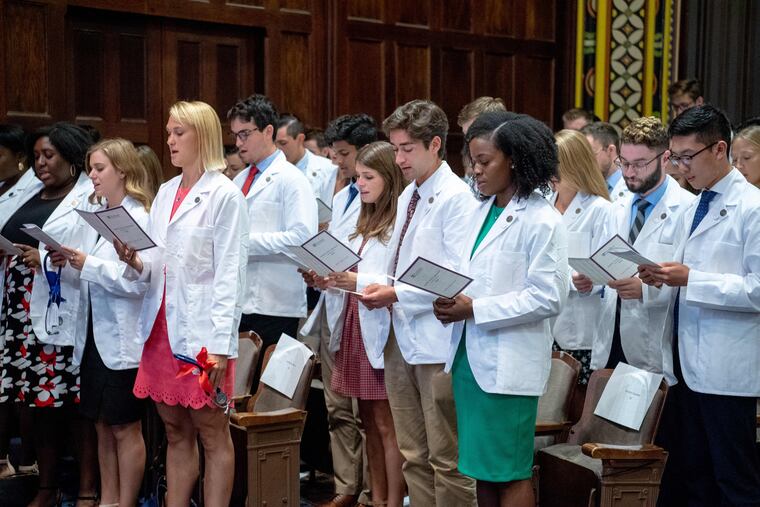Penn medical school scores well in U.S. News rankings
Penn was ranked third among med schools for its prowess in research.

The University of Pennsylvania’s Perelman School of Medicine has again scored high in the annual ranking of medical schools by U.S. News & World Report.
Penn was named the third-best medical school for research, tied with Stanford University, and 10th for primary care, tied with the University of Minnesota. Harvard was tops in research, and the University of North Carolina-Chapel Hill led the way in primary care.
In addition to the main categories of research and primary care, U.S. News also evaluates med schools for their performance in various specialties. Penn did well in those, too — especially pediatrics, in which it was awarded the top spot. That is largely a reflection of Penn’s relationship with Children’s Hospital of Philadelphia. CHOP physicians hold faculty appointments at Penn, and Penn medical students and pediatrics residents train at CHOP.
J. Larry Jameson, dean of the Perelman school, welcomed the recognition.
“Our faculty and staff have dedicated themselves to fostering innovation and paving the way for future breakthroughs in the classroom, the clinic, and the lab,” he said.
No other Philadelphia-area med school cracked the top 10 in any of the U.S. News categories.
U.S. News sought information from 185 accredited medical schools, of which 120 provided the data that the media outlet needed to calculate its rankings.
Among the factors going into the rankings for both research and primary care:
Peer assessment score. U.S. News surveyed deans and other officials at all schools, asking them to rate their peers on a scale from 1 (marginal) to 5 (outstanding). The officials were asked to score the quality of their peer institutions both for research and primary care.
Test scores. The rankers took into account the median total score on the Medical College Admission Test (MCAT) for the class that entered in 2018, as well as their median grade-point average as undergraduates.
Acceptance rate. Simply put, the percentage of applicants who were offered admission in 2018.
Faculty resources. This factor was defined as the ratio of full-time faculty to full-time M.D. or D.O. students in 2018.
The research ranking also took into account the amount of funding that each school and its affiliated hospitals received from the National Institutes of Health.
The primary care ranking included the percentage of a school’s graduates who entered primary care residencies, averaged over 2016, 2017 and 2018.